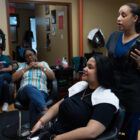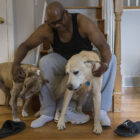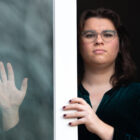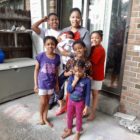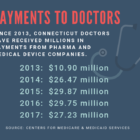I-Team In-Depth
‘One Way or Another, COVID Will Get You:’ Uninfected Yet Greatly Affected
|
On a bustling Friday morning, the aroma of rice and beans wafts through a cloud of hairspray in Romy’s Beauty Salon in Meriden. Merengue music soothes the senses. Customers exchange pleasantries in Spanish as Romy Norwood offers each a small bowl of “arroz y habichuela,” the Dominican staple of rice and beans. Later in the day, Norwood repeats the courtesy with small mugs of strong coffee, “cafecito,” prepared by her mother, Yolanda Sosa, in the kitchenette in the rear of the shop. Unlike Norwood and her mother, most clients aren’t wearing a mask.
